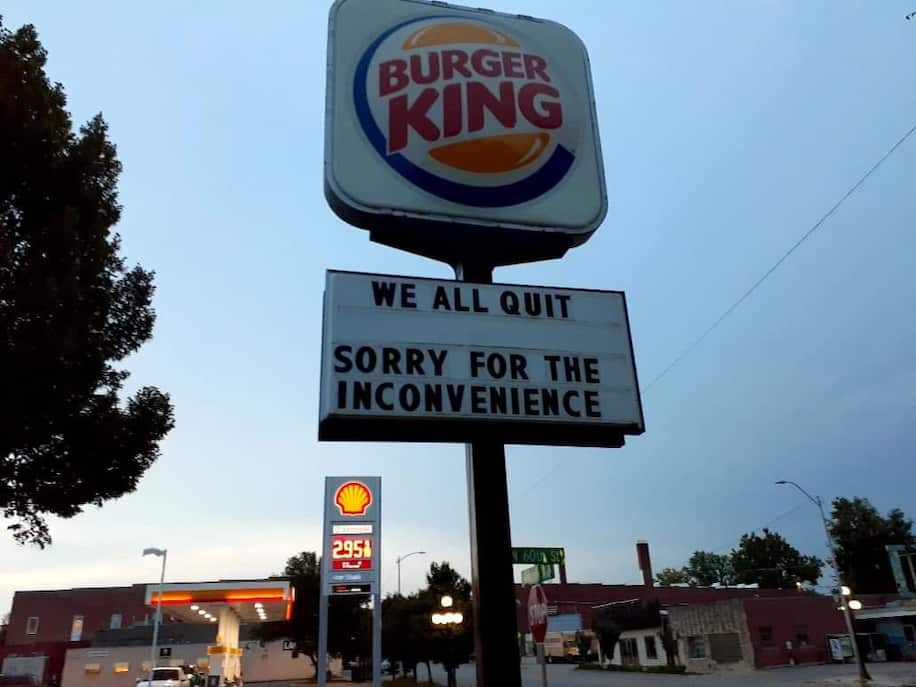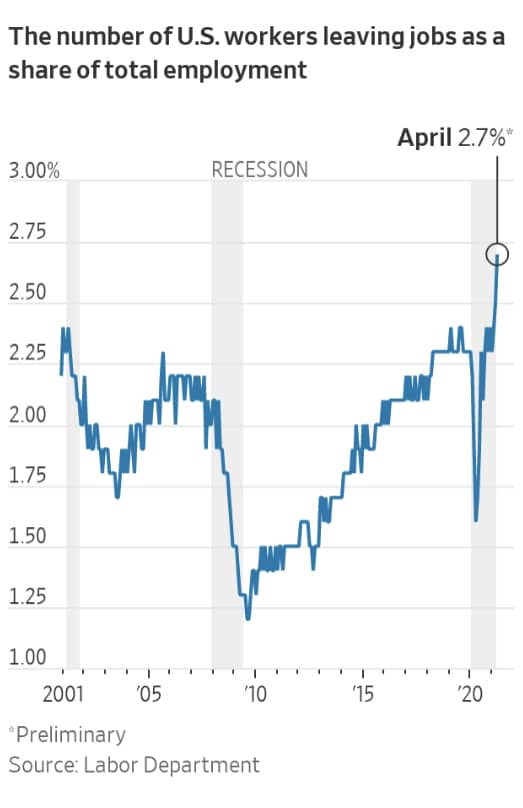
Photo Credit: Rachael Flores
A frequent topic of Conversations About Collaboration over the last month or so has been the Great Resignation.1 TL;DR: Millions of Americans are poised to leave their jobs as soon as their employers formalize return-to-work plans. In fact, it’s already happening:
From The Wall Street Journal:

In a word, ouch.
Still, some organizations are poised to weather the employee-turnover storm better than others—and yes, I’ve got a strong opinion on the matter: Companies that have embraced the Hub-Spoke Model of Collaboration will fare far better than those clinging to 90s-style “collaboration” methods.
Here’s why.
A Central Knowledge Repository
What happens to an employee’s inbox when she leaves her company?
IT deactivates her email address and effectively deletes the employee’s valuable correspondence, documents, and decisions. All of it. Poof.
Whoops.
What if those same emails lived on in Slack, Zoom, Microsoft Teams, or another internal collaboration hub? Then they’d remain for all relevant parties to see.
A More Transparent Culture
When used properly, internal collaboration hubs can promote greater transparency. Employees are more likely to know what their colleagues are doing, when they are doing it, and why. (See previous point.) As a result, it stands to reason that, when an employee leaves, there’ll be less confusion about the following:
- Who was responsible for what.
- How Employee X ran a process or completed a vital task.
I can only speak from personal experience here.2 If you think that increased transparency makes an organization more resilient and better equipped to deal with key departures, trust your instincts.
Automated Processes
What happens to an employee’s inbox when she leaves her company?
Automation lies at the heart of the Hub-Spoke Model of Collaboration. Manually entering data into two systems or apps invites errors, takes longer, and generally sucks. Coupled with the transparency angle mentioned above, organizations that have gone all-in on hubs and spokes rely less upon the clandestine, mysterious, and manual actions of an essential employee to make the magic happen.
Increased Ability to Handle Change
Finally, the Hub-Spoke Model of Collaboration almost always requires change. Researching Reimagining Collaboration, I found very few organizations that have adopted hubs and spokes from day one. (Data startup Tartle is the exception that proves the rule.) I’ll put these companies in Group A.
Next, There’s Group B. Faced with the pandemic, these organizations rolled out new collaboration technologies in a largely reactive way. (It’s no coincidence that the use of Microsoft Teams exploded as we started working from home. Ditto for Zoom.) To be sure, some companies in this group were already using internal collaboration hubs. Still, I’d wager that relatively few of them have gone beyond the basics:
- Simplifying antiquated business processes.
- Automating manual ones.
Put differently, only a minority has really reimagined collaboration.
Against this backdrop, I’ll bet that Group A does much better when a few employees—or a few dozen—give notice.
Footnotes
- Enjoy a related pod here.
- How I’d love to see some actual data on companies that have adopted the Hub-Spoke Model of Collaboration.

 PHIL SIMON
PHIL SIMON


0 Comments